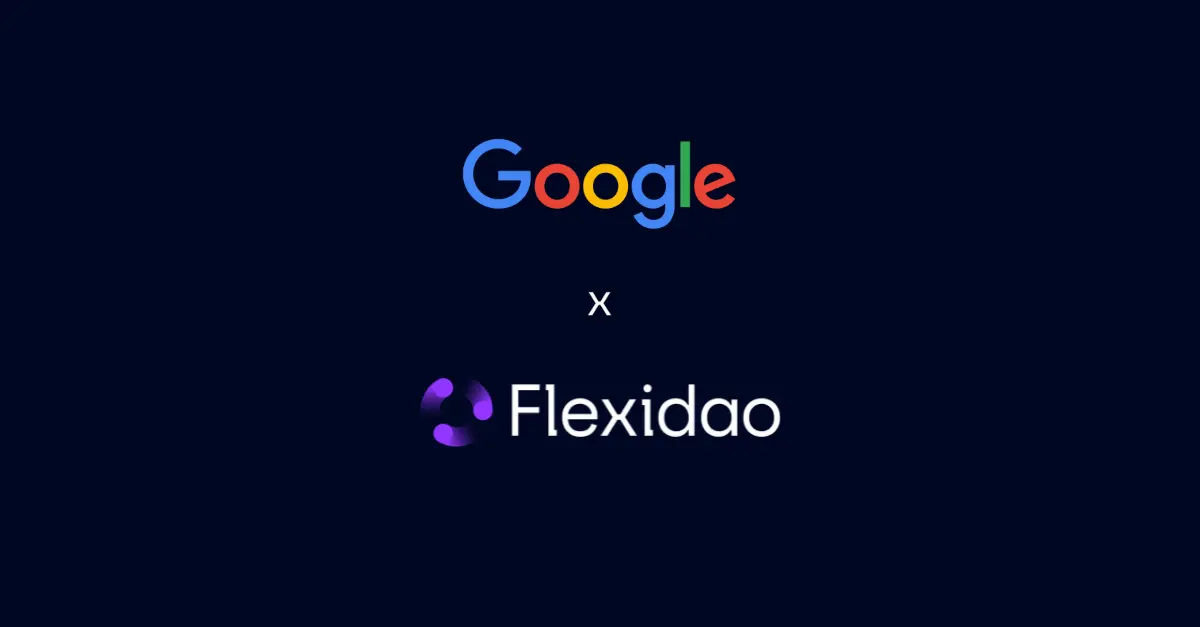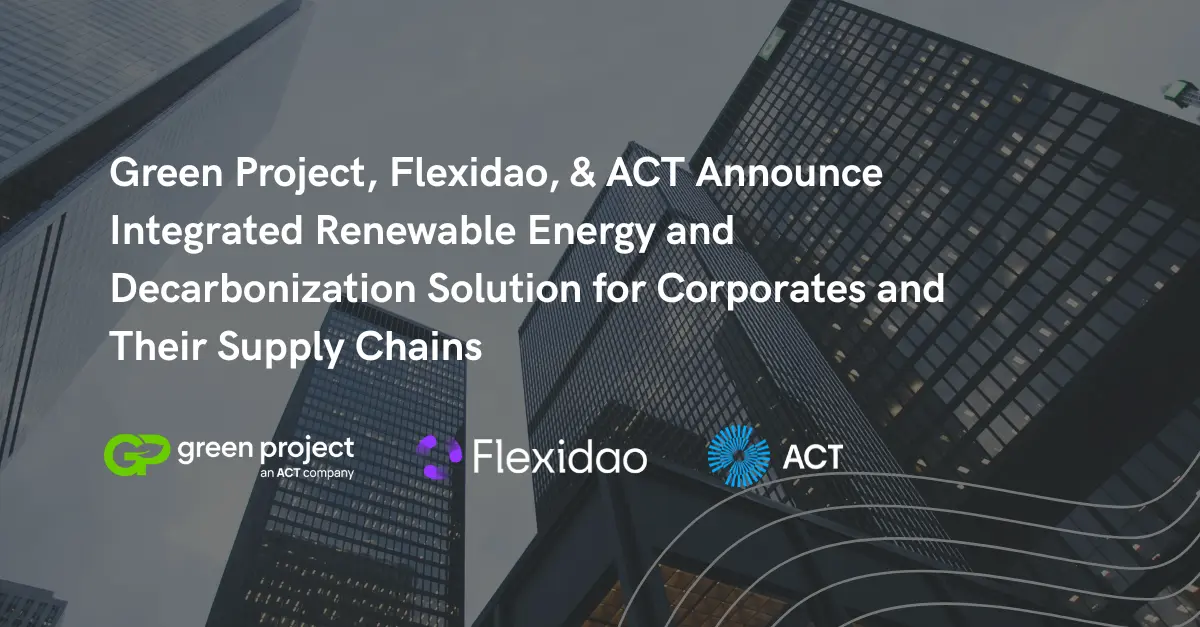Truth Behind the 100% Renewable Energy Claims
Truth Behind the 100% Renewable Energy Claims
How Flexidao can help Uncover the reality of 100% renewable energy claims, exploring the role of RECs, renewable energy zones, and hourly RES-E matching
It may come as a surprise, but when companies claim to be 100% renewable, this doesn’t mean that they use completely renewable energy sources every hour of the day. In this article, we will explore what 100% renewable energy claims mean and how organizations can strive towards using more renewable energy sources.
The 100% Renewable Energy claim stems from the way Energy Attributes Certificate (EAC) schemes that date back to the early 2000’s are set up.
EAC schemes are the systems that help track and verify the use of renewable energy. It's a way for businesses to show that they are using clean energy, even if the electricity they receive from the grid is mixed with non-renewable sources.
Here’s how it works:
- When a wind farm, solar plant, or any renewable energy producer generates electricity, they not only produce power but also an EAC. This certificate represents proof that a certain amount of renewable energy has been produced.
- The renewable energy producers can sell the electricity they generate, but they can also sell the EAC separately. This means the energy can flow into the general power grid, where it mixes with electricity from other sources, but the certificate stays with the producer.
- A business that wants to claim they are using renewable energy can buy these EACs. Even though the actual electricity they receive from the grid might be a mix of renewable and non-renewable sources, the EAC proves that somewhere, an equivalent amount of renewable energy was generated on their behalf.
- Once a business buys and "retires" (uses) an EAC, they can legally claim they are using renewable energy. This is how they can meet sustainability goals or report renewable energy usage to stakeholders, even if their physical energy supply isn’t fully renewable.
These schemes allow for compensations that are essentially financial contracts. Many businesses and governments base their 100% renewable energy claims on the fact they have bought enough EACs (also called GOs, RECs, REGOs, and I-RECs) to compensate for their renewable energy usage. The most advantageous aspect of this scheme is that it provides financial compensation for renewable energy producers. Significant amounts of money can flow to the clean energy producers in this way.
However, it is a system that can leave a big gap between the economic and physical realities in the energy system. To enhance decarbonization impact, some businesses are rethinking the rules of the game and how they procure renewable energy.
Adding Value to Existing Energy Certificate Schemes
One way businesses are attempting to move from nominally 100% renewable energy to truly zero carbon is by attempting to match electricity demand, hour-by-hour, 24/7, with corresponding clean electricity generation from within the buyer’s local electricity grid or bidding zone.
EnergyTag is an industry-led initiative that suggests adding this essential element to existing certificate schemes. EnergyTag is creating the standard for Granular Certificate Matching, which is effectively a version of the current EAC scheme where each certificate states the time and location in which renewable electricity was generated. Businesses aiming to achieve 24/7 Carbon-free energy can use granular certificates to ensure they are supporting local renewable generation which more closely aligns with their actual energy consumption. These conditions can be checked, registered, and certified every time matching happens following the Energy Tag Standard .
A more granular certification system gives companies more accurate insight into the sustainability of their electricity consumption. It allows them to make better-informed choices regarding which electricity they want to use, and companies can make their sustainability ambitions even more explicit towards true decarbonisation.
Emissionality: An Alternative Approach
Emissionality offers a complementary perspective to the 24/7 matching strategy for sourcing green energy. While 24/7 matching focuses on ensuring that energy consumption matches with real-time renewable energy generation, the Emissions First approach focuses on minimizing carbon emissions associated with energy consumption.
This strategy aims to maximize the decarbonization impact per dollar invested by addressing areas where emissions reductions are most needed. For example, areas with high renewable energy penetration and well-developed transmission infrastructure may prioritize investments that reduce emissions in less clean grids.
An Emissions First strategy may involve developing renewable energy projects in areas with a larger number of carbon emissions, even if these areas do not directly align with the company’s energy consumption. This is because reducing emissions in a region with a dirtier grid can have a larger impact than just adding capacity to an already clean grid.
Together, these combined strategies allow organizations to further reduce CO2 emissions from electricity consumption compared to traditional 100% renewable annual matching. By understanding real-time grid status and the impact of emissions displacement, organizations can make more effective and informed decisions about sustainability.
Examples of 24/7 Hourly RES-E Matching Use Cases
- Microsoft

Source: Microsoft
Microsoft has committed to a 100/100/0 goal by 2030. Flexidao is cooperating in a pilot project that will match one of Microsoft’s data centres with an offshore wind farm in the Netherlands. Check out the case studies here: 24/7 CPPA in NL by Eurelectric and their own article "Made to measure: Sustainability commitment progress and updates by Microsoft"

Source: Google
Google has also committed to consuming clean energy around-the-clock. They call this the 24/7 Carbon-Free Energy goal. For more details, read their official article: "New progress toward our 24/7 carbon-free energy goal". Flexidao is helping Google to track their global electricity portfolio. Find out more.
How Flexidao Can Help With Energy Claims
Flexidao offers an advanced inventory management tool that allows organizations to take advantage of end-to-end tracking, analytics, and management for their global portfolio of clean energy contracts. This includes Power Purchase Agreements (PPAs), Energy Attribute Certificates (EACs), and Green Tariffs. This robust tool allows businesses to effectively track progress towards achieving 24/7 renewable energy and emissionality targets.
Achieving decarbonization of the electricity grid and speeding up progress toward SDG7 requires advancements and innovations across policy, technology, and business models. This includes policy and market reforms to remove limitations for carbon-free energy procurement. Flexidao maintains leadership in energy policy, organizations with key insights into emerging regulations.
Take the next step towards refining your electricity data management with Flexidao. Our platform is designed to make global portfolio management easier than ever before through streamlined reporting, user-friendly visualizations, and automated reporting processes.


.webp)





